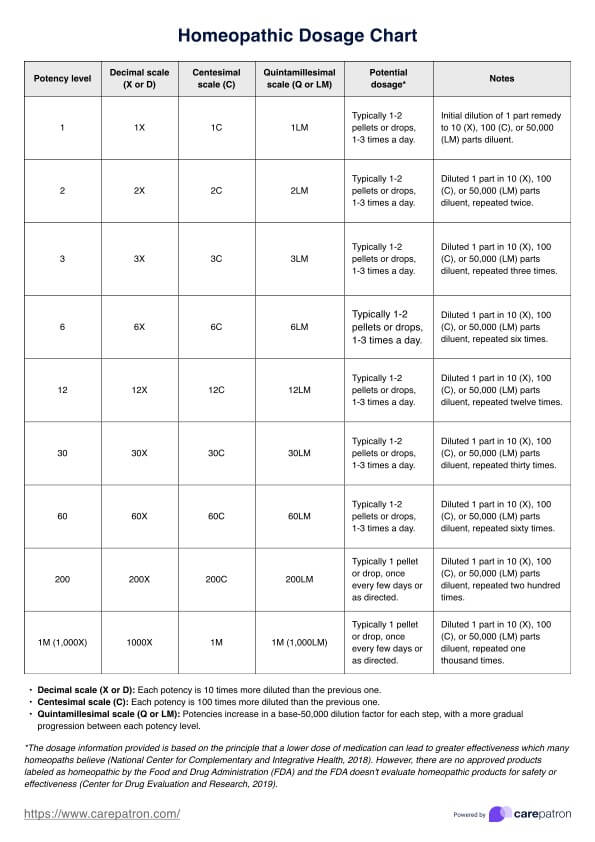Homeopathic medicine is a highly diluted preparation made from natural substances, including plants, minerals, and even compounds like sodium chloride (Natrum muriaticum). Remedies are chosen based on the principle of “like cures like,” meaning they are selected to match similar symptoms a person is experiencing. A different remedy may be recommended for each individual depending on their unique symptom profile.

Homeopathic Dosage Chart
Access a free Homeopathic Dosage Chart for reference. Learn how to determine the dosage of homeopathic remedies.
Homeopathic Dosage Chart Template
Commonly asked questions
Homeopathy is not the same as herbal medicine or general natural remedies. It uses extreme dilution and succussion to prepare remedies and typically prescribes one dose at a time, sometimes gradually increased in potency, whereas natural remedies deliver measurable active ingredients on a fixed schedule.
Although homeopathic remedies are generally safe, taking repeated doses unnecessarily may cause a temporary worsening of symptoms, known as a homeopathic aggravation. To avoid aggravations, practitioners recommend taking a single dose, waiting for a response, and switching to a different remedy only if needed.
EHR and practice management software
Get started for free
*No credit card required
Free
$0/usd
Unlimited clients
Telehealth
1GB of storage
Client portal text
Automated billing and online payments











